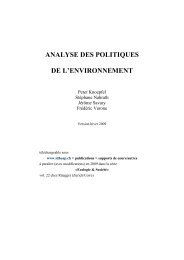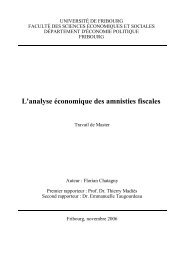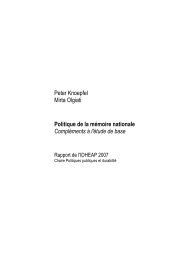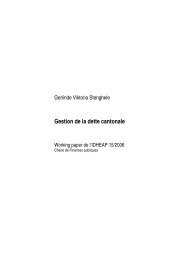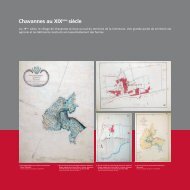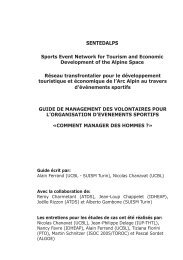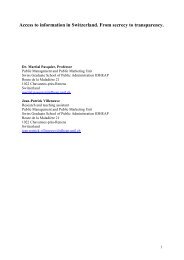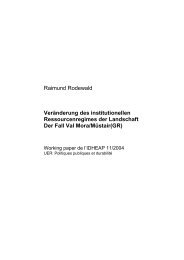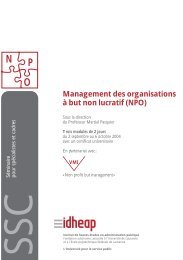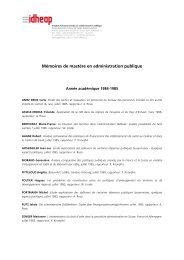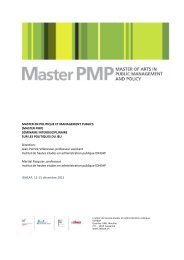Voting advice applications and party choice: evidence from ...
Voting advice applications and party choice: evidence from ...
Voting advice applications and party choice: evidence from ...
Create successful ePaper yourself
Turn your PDF publications into a flip-book with our unique Google optimized e-Paper software.
<strong>Voting</strong> <strong>advice</strong> <strong>applications</strong> <strong>and</strong> <strong>party</strong> <strong>choice</strong> 379<br />
Figure 1 Predicted probabilities for vote change for influenced vs. not-influenced smartvote<br />
users based on specific values for age (see online version for colours)<br />
Predicted Probabilities for Vote Change<br />
.2 .3 .4 .5 .6<br />
20 30 40 50 60 70<br />
Age<br />
Not influenced<br />
Influenced<br />
95% CI<br />
95% CI<br />
Source: NCCR “Democracy”, IP16 “smart-voting 2.0” (http://www.nccr-democracy.<br />
uzh.ch/research/module5/smart-voting/smart-voting). Author’s calculations.<br />
Note: Predicted probabilities for vote change among those who were influenced <strong>and</strong><br />
those who were not influenced at specific values for age, averaged over the<br />
remaining covariates.<br />
Figure 1 illustrates that young voters who were influenced by the voting recommendations<br />
have a higher probability than older voters to change their vote <strong>choice</strong>s. Moreover, the<br />
probability of swing-voting is higher among those who were influenced by the voting<br />
recommendations than among those who were not influenced in their vote <strong>choice</strong>s. The<br />
confidence intervals around the point estimates indicate that the difference between the<br />
two groups is significant, with the exception of the age groups of 60 <strong>and</strong> 70. This is most<br />
likely due to the small sample size in these categories, which make a precise estimation<br />
more difficult (indicated by the larger confidence intervals). The exact values of the point<br />
estimates are not relevant in this context since they are dependent <strong>and</strong> vary according to<br />
the values set for the covariates. We are interested only in the differences <strong>and</strong><br />
significance of the point estimates, which, in our case, remain stable even if we specify<br />
different values for the remaining covariates. In sum, the estimated model indicates that<br />
the probability for swing voting is higher among those smartvote users who indicated that<br />
they were influenced by the voting recommendations <strong>and</strong> more so for younger users than<br />
for older users.



